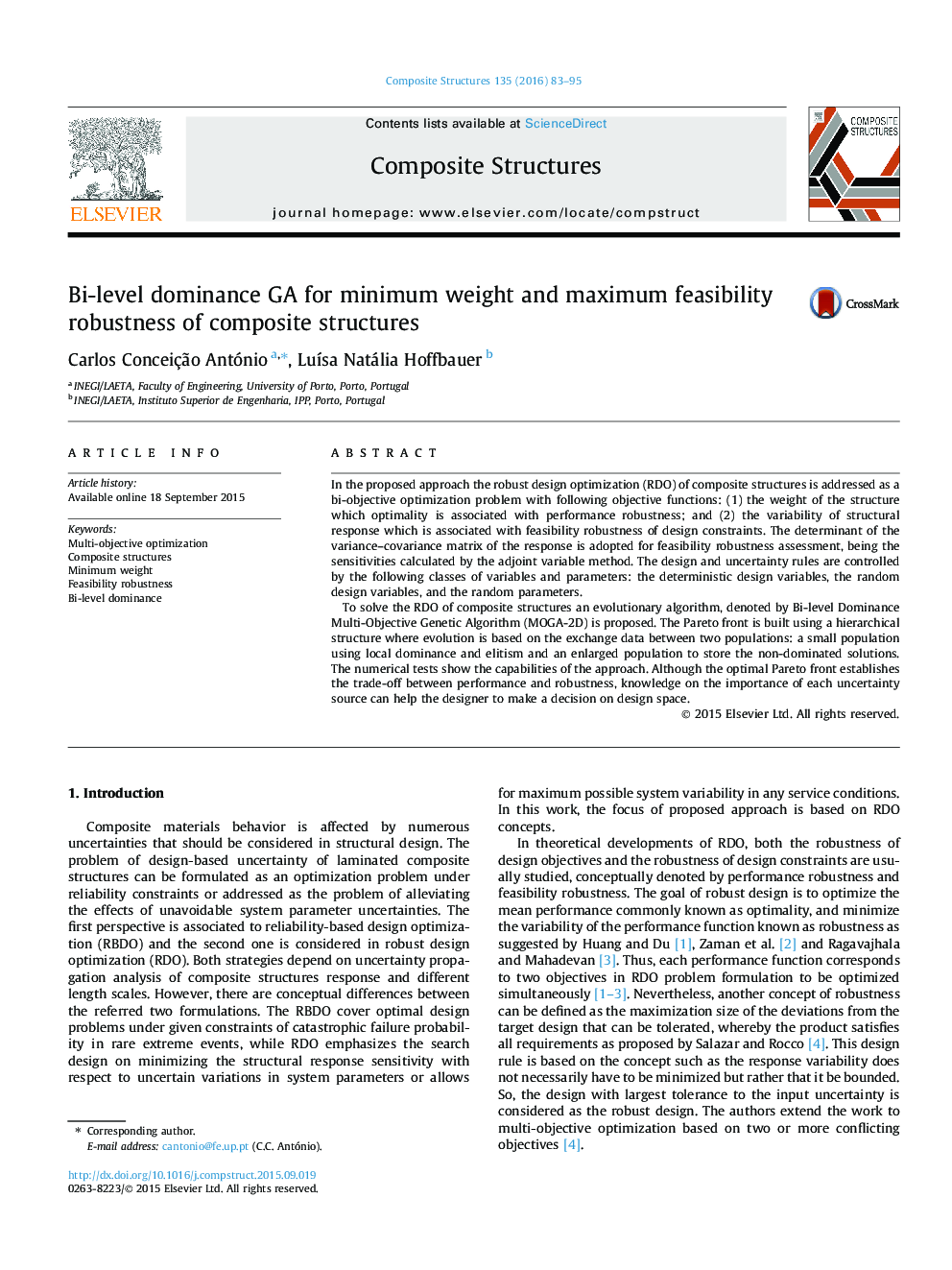| Article ID | Journal | Published Year | Pages | File Type |
|---|---|---|---|---|
| 251170 | Composite Structures | 2016 | 13 Pages |
In the proposed approach the robust design optimization (RDO) of composite structures is addressed as a bi-objective optimization problem with following objective functions: (1) the weight of the structure which optimality is associated with performance robustness; and (2) the variability of structural response which is associated with feasibility robustness of design constraints. The determinant of the variance–covariance matrix of the response is adopted for feasibility robustness assessment, being the sensitivities calculated by the adjoint variable method. The design and uncertainty rules are controlled by the following classes of variables and parameters: the deterministic design variables, the random design variables, and the random parameters.To solve the RDO of composite structures an evolutionary algorithm, denoted by Bi-level Dominance Multi-Objective Genetic Algorithm (MOGA-2D) is proposed. The Pareto front is built using a hierarchical structure where evolution is based on the exchange data between two populations: a small population using local dominance and elitism and an enlarged population to store the non-dominated solutions. The numerical tests show the capabilities of the approach. Although the optimal Pareto front establishes the trade-off between performance and robustness, knowledge on the importance of each uncertainty source can help the designer to make a decision on design space.
